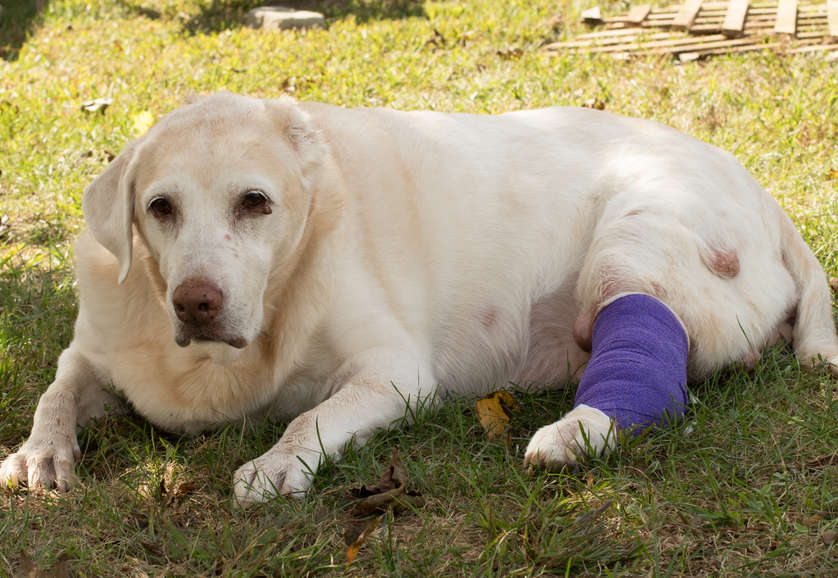What is asthma?
Asthma is characterized by the narrowing of the airways of the lungs.
- Inflammation of the airways
- Airway hyperresponsiveness
- Reduced airflow
- Whistling
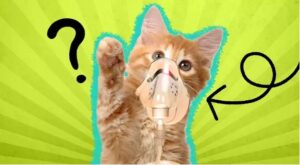
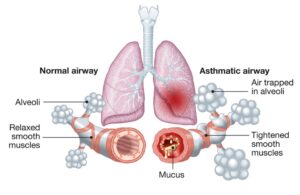
When a sensitive cat first inhales an allergen, its system creates specific antibodies to target that antigen. When the cat is re-exposed to this antigen, these antibodies recognize the allergen and initiate a series of events that bring many different types of immune cells into the airways. These immune cells then trigger the production of substances that promote inflammation, a condition that leads to irritation, swelling, and reactive narrowing of the airways. As a result, the diameter of the airways may decrease and mucus may accumulate within the passages. All of these processes limit the ability of air to move through the airways and cause the cat to have difficulty breathing.
The feline condition was named asthma because of the clinical features it shares with human disease. As of now, it appears that all the diagnostic criteria needed to diagnose asthma in humans are common to cats, however, we are still working out the mechanics of this syndrome in the cat and have much to learn.

Clinical event
Bronchial asthma occurs in cats of any age, breed, and sex. However, there is a predisposition in female Siamese, Himalayan cats aged 2-8 years.
Cats manifest the disease in the form of an asthma attack or in the chronic form.
More specifically, the cat shows intense expiratory or mixed dyspnea, tachypnea, orthopneic posture, cyanosis, coughing, breathing with an open mouth, and an anxious expression on their face.
Diagnosis
These marks may occur spontaneously or may be induced by applying light pressure to the cat’s neck area. During an asthma attack, many cats hunch their bodies close to the ground and stretch their necks forward in a characteristic posture.
The next step in diagnosing feline asthma is a chest x-ray. Classically, this x-ray will show what is called air trapping. This means that the small airways have narrowed so that inhaled air cannot be exhaled. The lungs are larger in appearance than normal as they are overinflated. The diaphragm may appear flattened due to this excessive inflation.
The two images are x-rays from the same patient, the left x-ray is normal, the right x-ray was taken while the patient had an asthma attack.
When diagnosing feline asthma, it is important to rule out other conditions that can cause similar signs and give similar test results. Chronic bronchitis, lungworm infestation, migration of other parasites into the lungs, and other infectious diseases leading to pneumonia can all lead to signs and test results similar to those found in asthma. Medications used to treat these other conditions may not be appropriate for a cat with asthma and may do more harm than good.
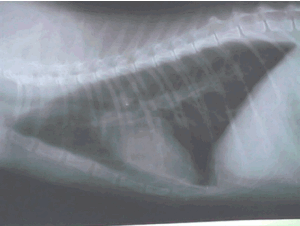
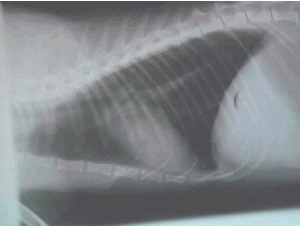
Treatment
Most cats respond positively within 15-30 minutes of being placed in an oxygen cage and given rapid-acting glucocorticoids (hydrocortisone, or dexamethasone). We prefer the intramuscular route over the intravenous route to avoid stress from restraint. Glucocorticoids inhibit the migration of inflammatory cells into the airways, reduce the release of pro-inflammatory substances and promote bronchodilation (prednisolone or methylprednisolone). agonist causes minimal side effects on cardiac function. Its administration can be repeated after 5-10 minutes.
Therapy using portable devices:
People with asthma have been enjoying the benefits of portable inhalers for years. These easy-to-use devices deliver drugs locally to the airways, thereby minimizing drug side effects in the rest of the body while maximizing the desired response. There were two problems with using these devices in cats:
Cats can’t tell when to inhale. Cats tend to strongly object to the activation of the drug (the spray delivered by the device).
The invention of the pediatric spacer also solved the cat inhaler problem. The cat takes 7 to 10 breaths of the face mask to dose properly. Corticosteroid inhalers, with Flovent® being the most popular, are usually used twice daily long-term, while airway dilator inhalers such as Proventil® or Ventolin® containing albuterol are used for flare-ups
Cats are generally started on a combination of oral prednisolone and a metered dose inhaler and gradually maintained on the metered dose inhaler alone.
DO NOT FORGET
- Minimizing irritants in the air is always helpful for the asthmatic cat.
- Do not leave cigarette smoke in the cat’s environment.
- Use dust-free cat litter.
- Avoid insecticides and sprays
- Replace air filters at home regularly.
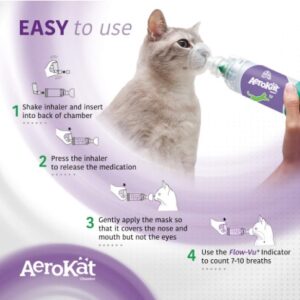
GOALS OF THERAPEUTIC TREATMENT
- It is the prevention of the occurrence of frequent attacks of bronchospasm and their development into an acute asthmatic attack
- The selection of appropriate therapeutic measures with the least side effects for long-term application
- Providing the cat with a good quality of life.

